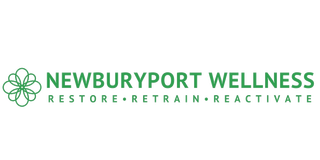|
72% of women complain of back or pelvic pain in the first year postpartum and many still have complaints for up to 3 years. It is clear that work needs to be done to restore core control and strength postpartum. This means we need to encourage a progression of recovery and core activation. The shifts in workload, posture and muscle activation patterns during pregnancy may not spontaneously return to your pre pregnancy motor pattern. It doesn't mean you are destined to have back pain because you had a baby. It means we need to re-think recovery. Recovery Weeks 1-2 "HEAT" and "BRICE" "HEAT" (NOT LITERALLY!) Hydrate- Your body needs to cleans our waste and needs lots of water to fuel recovery and nursing. Eat- Eat plenty of nourishing soups and stews to have the fuel to heal. Accept- Accept help. Your body needs to recover, just like if you had an injury. Yes your body was "designed" to give birth. That doesn't mean it is an easy task. Tend & Temper- Make your primary focus tending to your baby and to yourself. Listen to your body. Rest when you need to without heeding your internal desire to push through things and get going with your postpartum body. Temper the desire to "get back to normal." This is a process that determination can't rush. "BRICE" Breathe- the best way to reactivate your core stability and reduce the risk of pelvic floor dysfunction and back pain is to breathe! (Not sure how- watch my video!) Rest- rest- sleep when you can. Allow your body to begin to restore energy and to begin the recovery process. Ice icing perineal area (ask your healthcare practitioner for details), will help reduce pain and decrease swelling of the pelvic floor. Compress- when your up out of bed, you may feel heavy and sore in your pelvic floor. Wearing supportive underwear or shorts with some support may help to give support to your tired pelvic floor. Elevate- just like you would elevate a sprained ankle, laying down to unload your pelvic floor will help it to heal. Walking Postpartum During pregnancy evidence indicates that the walking patterns of women changes along with the position of the spine, center of gravity and therefore head/neck, shoulder positions. Studies are sparse with regards to providing exact values on all of these shifts and the long term effects. Until we have substantial studies to review, it remains unclear if all of the shifts return to baseline postpartum. From studies in other arenas, we know that it is very easy for the human body to adapt and create a new norm. To assume that pain and the mechanics you needed to use when pregnant will "just go away" postpartum is perhaps idealistic. Walking is good. Slowly build your tolerance to avoid pelvic heaviness, increased bleeding or back pain. Walk around the bed/ in the home for the first 3 weeks postpartum and slowly progress walking distances from there if you have no medical complications where your doctor has advised you to limit activity. It is good if you can walk without pushing a baby or holding your baby for some walks. Walking mindfully will help you to reconfigure your body awareness to midline and symmetry. Don't worry about speed or distance. Focus on how your muscles feel left to right, sensations of pelvic heaviness and breathing with the activity. Restoring Your Core Dare I say it again??? Breathe. Breathe Breathe. And, begin to assess your motion. Are you feeling tight when you turn one direction? Do you feel like your pelvic floor is still on high alert even though tears are healing? Or do you feel like you can;t connect at all with your pelvic floor? Think posture. It is easy to fall asleep in wacky positions in a nursing chair and slouch when nursing for what seems like hours on end. Slouching can put your pelvic floor in an unsupported or strained position. It also detracts from the efficiency of breath to activate your core. Lastly, maintaining the over arched position you rocked during pregnancy inhibits breath by reinforcing malalignment and forces upper abs to grip for dear lift to hold you up while your lower abs become more and more disconnected from their participation in core stability and posture. It doesn't mean you can't slouch or arch your back to hold your baby, but be sure to move in and out of a variety of positions. What core exercises are best? Sorry ladies. You are all different and that means what you need to do to connect with your core postpartum can't be googled. Studies show that it is often not what you do but how and why you do it. I can't recommend enough a postpartum assessment by a whole body movement expert who is competent in pelvic health awareness. Want to learn more? Are you uncertain about really connecting with your body postpartum? Call for your complimentary Discovery Session! Comparative Study. J Pregnancy 2013;2013:718095. doi: 10.1155/2013/718095. Epub 2013 Jan 31.
J Phys Ther Sci. 2015 Jun; 27(6): 1813–1817. Published online 2015 Jun 30. doi: 10.1589/jpts.27.1813
1 Comment
I have always had back pain I was told my pelvic pain would go away eventually after childbirth My whole family has bad backs My back hurts because I am overweight I know the doctor says I should exercise but I just can't seem to motivate when I am in pain If you have said or thought any of these statements, you are not alone. But hear me now... You are not destined to a life of back pain, pelvic pain, peeing or a life without exercise and freedom of movement just because you have been told you will. If movement causes pain, it can be so hard to see a way that movement can be a positive experience. Clearly chronic pain is complex. But as we learn more about the brain body connection, it is clear that there is not only more to uncover about the brain's ability to reroute motor plans when there has been an injury but how active work can override ineffective motor plans and overeactive central nervous system responses to pain. Benefits Of Movement On Chronic Pain Studies have compared the effects of traditional exercise, yoga, mind body relaxation and psychotherapy on chronic pain. Many studies look at conditions like low back pain or fibromyalgia. Results are promising for some improvement with each of these interventions. Often regular exercise is recommended for chronic conditions such as back pain, endometriosis, PMDD (premenstrual dysmorphic disorder) and more. The idea of exercise and yoga is to increase strength and mobility. Yoga has the added benefit of promoting a brain body connection via breath. The added bonus of movement for chronic pain is to improve mood by increasing serotonin levels in the body. However, for many these options are pain provoking or simply not enough to reduce pain appreciably. If you can't exercise you can't improve your mood with exercise either. The Brain's Response To Chronic Pain There are three factors that don't often get discussed when it comes to chronic pain (pain that lasts longer than 3 months) 1. You brain literally reconfigures the connection with the injured body part and this can result in a shift on how you use your body during movement. For example, in patients with low back pain, it was found that the area in the brain where a key core muscle is represented shifts from its original position. In addition, it is delayed in activation with motion. Similar findings have been found with other body parts post injury. 2. In a study looking at injury, it was noted that within 24 hours of an arm becoming immobile, the brain began to disconnect neural connections with the body part. 3. If your body has found an alternate way to get the job done, exercising a weak muscle will not change the faulty pattern. this means that straight up exercise is not the best solution to injury recovery. What This all Means To put it all simply it means this: The sooner you address a pain, injury or dysfunction the better. Postpartum pain and dysfunction should not be considered as a natural consequence to "having a baby." Take time for self care now. If you have struggled chronic pain or dysfunction and have not found success with traditional strengthening you may need a new motor plan instead. Reconnecting with an efficient motor plan is critical. Keep in mind that you can strengthen a muscle all day long, but if you don't use it properly, it doesn't matter how strong it is. These studies also indicate that it doesn't take long after an injury for your body to move to plan B. Meaning it finds a new way to get the job done. So for all of the times I have heard my clients say that they only had an episode or two of back pain or stress incontinence and then all of a sudden it got bad, we need to understand that the more severe dysfunction was likely a work in progress all along. What to Do 1. Recognize that it is not what you do for an hour but what you do minute by minute that matters most
2. Take time to slow down and listen to your body. can you detect how your body feels different left to right? For example, if you walk slowly can you feel your glutes work the same on each side? 3. Consider reaching out to a clinician that will help you to redefine a solid motor plan to get your body back "online." 4. If tackling an exercise program or yoga feels scary or threatening, recognize that you will likely not find success. working with someone to find a safe space to nurture movement is key. Your body will not move well when your nervous system is on high alert! So, here it is. Intuition meets science. For years I have been promoting exercise as a primary intervention to boost perinatal mental health in my inner circle. A recent study published by the Frontier's in Women's Health was just released. It states that the rate of high anxiety in pregnant or newly postpartum women has gone from 24% pre-pandemic to 74% during the pandemic. It also reports that those partaking in moderate intensity exercise has a significant impact on improving mental health. For those women riding that line of anxiety and depression, this may be easier said than done. YOU ARE NOT ALONE First and foremost it is critical to remember that you are not alone. There is a continuum of normal emotional variances during pregnancy and beyond that often don't get talked about enough. I am remembering back to when I went to a concert after my first daughter's birth. I was so anxious about the crowds, being away from her and everything else in between I never heard the music! I had no idea that postpartum anxiety was a real thing. I only had heard of postpartum depression. My husband thought I was being dramatic and the entire day out was depleting and exhausting. When I finally learned that there really is a continuum of experiences and emotional variances that occur to women around the stages of pregnancy and postpartum I felt a bit frustrated that no one had educated me about this part of motherhood. I only had heard of severe postpartum depression and I didn't fit in that category. If I had been aware of what might happen, I would have been more gracious with myself and maybe done some reading to resource some assistance if needed. Pregnancy and Postnatal Recovery are meant to be surrounded by a tribe Pregnancy is a time to listen and guage activity What can women do to take action especially during Coronavirus? EXERCISE DECREASES PRENATAL AND POSTPARTUM SYMPTOMS OF ANXIETY AND DEPRESSION Exercise can reduce prenatal and postpartum symptoms by up to 67% according to a study referenced by the Frontier article. Many pregnant and postpartum women I have met often know that they should try to exercise if they are medically cleared to do so. However, it is often hard to get started whether it is finding the time, energy or ability to revamp an exercise plan now that many are avoiding gyms and studios. As we learn more about grading the return to exercise postpartum, many women are left in the dark about how or when to proceed. The recommendation sounds easy enough, but there is really a lot to navigate for many women during this period of life, especially now with Covid-19. Exercise gyms and studios have been great about transitioning to virtual classes during Covid-19. What if you are not an exercise class kind of gal? What if you have a toddler at home so you can't focus through a class? What if you know you could add exercise, but can't seem to motivate yourself? A FEW IDEAS ON INTEGRATING EXERCISE 1. If the mountains seems high, start small. Sometimes a walk outside seems monumental, so try 5-10 squats every time you get up to go to the bathroom or go up/down the stairs one extra time several times during the day. 2. If you have kids- set up a date to play whether it is tag, simon says or taking a nature walk. Know that they will feel better too after some quality time! 3. If you are new to exercise don't go it alone. If you don't want to hire a personal trainer for weekly sessions, can hire them to make a simple program for you to follow? You can stay accountable by enlisting the help of a friend. 4. If you are working from home, don't forget to get to get up every 52 minutes and move for 17. If your meetings last longer, set aside the time in your schedule. Remember that you have gained the time of your am commute. Guard your personal time vehemently. Work can wait. 5. Do you have more questions? Call! I am here for support! BEST FIRST EXERCISE....BREATHE Breathing is really the best and first exercise to begin with. We think that breathing comes naturally, but breathing to optimize core activation and support to protect your back, pelvic floor and reduce potential for excessive diastasis recti takes a bit of education. Breathing also reduces heart rate and regulates our body's responses to stress. If exercise is not possible, just start with breathing. Then reconfigure your web of wellness to support the next steps. FINDING BALANCE Everyone's pregnancy, delivery and postpartum experience is different. You may not feel well enough to partake in exercise at all points of time during your pregnancy. And the more we learn the more we know that you should not be expected to pop back into a full workout at 6 weeks postpartum. You may have a pre-existing injury that limits your ability to exercise with large groups on line or in person. Maybe you are like me and big classes were never your thing. The point is that every woman needs to begin to listen to their intuition and push when they can, rest when they can and do the kind of exercise that suits their body. This by no means that you have to do it all alone. This is the time to define your web of wellness, built with a network of people who are there to guide and support your individual goals. Here in the Merrimack Valley of Massachusetts we have a great sight for women to find local support called Pentucket Mom's Support. Do you want to learn more about breathing technique? Check out my video here Ready to start coaching or PT to help connect you during this journey? Call today to set up your complimentary Discovery Call.
A Bit About The Hip Flexor The hip flexor muscle complex extends from your diaphragm (breathing muscle that sits under your ribs) all the way down to your thigh bone (femur). This long and vital muscle group is strained during pregnancy as you begin to "over arch" your back to balance out a growing belly. This posture has several ramifications for the hip flexor and may leave you with back pain or the feeling that you need to stretch your hip flexors post baby. But, there are a few things to consider before you start your hip flexor stretches! I invite you to consider how your breath, posture and movement might be a better solution to alleviating hip flexor "tightness." Posture To Reduce Hip Flexor Pain When we stand in a typical upright posture the hip flexor runs straight down from the diaphragm, attaching to several vertebra of the lower back. Studies indicate that the top portions of the psoas act as stabilizers of the core. With the spine in an over arched (extended position) for a prolonged period during pregnancy or even when holding babies, we are taking the muscle and inhibiting its ability to work in an optimal position. The upper portions of the psoas are elongated and can't work effectively as a stabilizer. In addition, it is possible that there is an increase in shear force (rubbing) on these tissues as they now have to course over the vertebra at a new angle. Of course the muscles feel tight! They are on stretch! They do not need more stretching. The lower fibers of the hip flexor may indeed be a bit tight as they shorten slightly with back extension. This can be addressed with postural correction much more efficiently than a stretch. Its not what you do for 30" but how you move and hold yourself throughout the day that matters more! Working on posture to avoid over arching of the spine is a critical step to reducing hip flexor tightness and back pain. Breathing And It's Effect On The Hip Flexors The diaphragm and psoas major are connectd. During pregnancy the diaphragm cannot descend it's full excursion during the last months of pregnancy. Under proper conditions the diaphragm and upper portion of the psoas move synergistically with breathing to provide support to the core. During pregnancy (or when standing with your butt clenched and back overarched), this nourishing ebb and flow of the diaphragm and it's effect on the psoas is interrupted. Focusing on reconnection of a full breath to the pelvic floor when in a variety of positions will help to re-engage this dynamic duo, restore function and reduce pain. Movement To Restore Hip Flexor Activation And Reduce Back Pain Lastly, engaging your breath in a variety of positions to retrain the connection of the hip flexor to breath is the first step to restoring core stability to reduce back pain. Remember that you need to be strong and stable in a variety of positions and in that the psoas can be retrained to function as part of a team not as a stabilizer on its own .
Want to learn more? Check out my breathing video as step 1. Call or email me with any questions! I can just imagine the joking conversations amongst friends now. How the best part of Coronavirus quarantine is that no one has to worry about getting up frequently to go to the bathroom at work. I am sure there are many extra trips being made to empty bladders "just in case!" Leaking is also less of a worry when we are home instead of out and about. But, are you aiding and abetting a faulty pattern? What happens when we slowly return to life and need to manage away from a bathroom for more than an hour? Signs of Bathroom Overuse...
Who Cares If You Are Overusing The Bathroom During Social Distancing? Training your bladder to empty all of the time can be counter productive to what you are trying to avoid... Accidentally peeing. Compensating for dysfunction may be inadvertently promoting more dysfunction. By emptying your bladder when it is not full, you are training it to think it is full. This means, that when it is time to return to out of the house living, you will likely be more likely to need the bathroom on a regular basis... This is exactly what you don't want when you are out and about during a pandemic! How Does Fluid Intake Impact Bladder Health Anyways? We all know we are supposed to drink water, but, when you leak or experience urinary urgency, it is easy to cut down on water intake in an effort to compensate for the frequent desire to urinate. This can lead to bladder irritation and an increased desire to pee. It can also lead to constipation. When your bowels are backed up, your belly feels full and you may misread this fullness and think your bladder is full when it is not. Dehydration can also lead to UTI's. Lastly, muscles need water to function well. If you have a tendency towards pelvic pain, a chronic state of dehydration may only be making things worse.
TIP 1: Drink water slowly! The tendency is to be so busy that we forget to drink. When we think of it we guzzle water your body is less able to absorb water and we tend to expel it more rapidly. TIP 2: If your one of those gals who does ok all day and at bedtime, suddenly feel a frequent urge to head to the bathroom, try the above mentioned sipping of water for 2-3 hours before bed. Also, try some relaxation breathing to relax your pelvic floor muscles before heading to bed. Want to learn more and see if you might be a good fit for virtual PT and coaching to reduce your symptoms of urgency and leaking don't wait! Call today to set up your complimentary Discovery Call! Mention this blog for 20% off your first session! Bone density takes a dip during pregnancy and during nursing. However, it is rarely mentioned as an issue because studies show that by and large it returns to baseline when you are done nursing. But, because so many women eventually suffer from osteoperosis, I'd like to present the case that we should consider the importance of optimizing bone nutrition and health during this stage of life. WHY BONE NUTRITION AND HEALTH MATTERS POSTPARTUM 1. Women are having babies later in life. That means less time to come back to baseline and regroup with regards to your health prior to the onset of perimenopause and menopause. 2. Women stop building more bone density by their early 20's at the latest. 3. Women often take hormonal birth control in their younger years and this may negatively impact bone health during the prime of their lives! 4. By 50 years of age, bone breakdown can begin to exceed bone repair. 5. The older you are when you get your period the more likely you are to get osteoperosis SOME BASIC STATS 16% of women in their 40's have osteopenia (the stage before the diagnosis of osteoperosis) 14% of women 50-59 years old suffer from osteoperosis 22% of women 60-69 years old suffer from osteoperosis 39% of women 70-79 years old suffer from osteoperosis 70% of women 80 + years old suffer from osteoperosis. SO WHAT CAN YOU EAT TO SUPPORT BONE HEALTH DURING THE POSTPARTUM PERIOD? SALMON- 570 IU's of vitamin D (super necessary for bone health!) CHIA SEEDS- 1 serving has 4 grams of protien and 18% of Calcium RDI in one serving! White Beans 1 cup contains 13% of your calcium RDI! Want some recipes?
If you are not a fish eater due to consistency, try grilling your salmon to get a more firm consistency. Not sure of a chia seed recipe or don't like the consistency? Email me for 3 ways to add chia seeds to your diet. If you don't like the consistency, try blending it first to make it less like tapioca. Personally I love ginger pear chia seed pudding for a snack (chopped ginger to taste, 1/2 diced pear, 3 TBS chia seeds and 1/2 cup vegetarian milk, cinnamon to taste and a dash of maple syrup if you want some extra sweetness)! White bean soup is just one option for beans! My kids like turning white beans into a dip like hummus and even a "cookie dough" dip! Get creative and try something new! If cooking and exploring food is not your forte and you really want to shift your health and wellness in the postpartum period, start thinking about a coach! Call today and we can talk about what you are looking for! Happy Mother's Day to all of the caretakers of the world. Whether mother by birth or mother by your role as leader, mentor or caretaker, my gratitude and great love goes to you all. Right now during Covid-19, women all over the world are holding up so many. We hold up our children, parents, in-laws, neighbors and more. We have worried for our loved ones and for those we don't know. Covid-19 has called upon us all to stretch in ways we never imagined. But who is holding you up? Who holds up the one who holds up so many? Is a workout enough to check the box of selfcare? I would like to propose that we move beyond the response of "as good as can be expected."
I want you all to know that I am thinking of you and energetically stand here in my home holding up and sending energy of replenishment and gratitude to all of you. When so many define self care as hair care, massages, and brunch with extended family on Mother's Day, I can only imagine that it will be a challenge for many to redefine a successful Mother's Day. I invite you to consider the gift of giving yourself some time to quietly listen to your body. Covid-19 has presented as difficult for many who stay so busy that there is no time for quiet introspection. For many, sitting quietly and truly listening to our innermost goals, body signals and dreams can be daunting. My beloved caretakers of the world, the gift of Covid-19 can be that we finally take the time to reconnect with the purity and simplicity of what is important. Health, happiness, connectedness to family. Many of us have considered ourselves healthy and partaking in self care if we exercise and eat relatively well. We often ignore or truly do not even notice some areas of dysfunction that may not yet impact our daily life. We might stay on the treadmill of overworking and overextending because it is what we all do. It is so hard for most of us to live in alignment with our innermost passion and sense of connectedness with self. Maybe in today's world it isn't even totally possible. But FOR THIS MOTHER'S DAY, I invite you to take a moment and ground yourself in the idea that you have received an invitation to find happiness, connectedness and health in a simpler, more authentic journey. Slow down and listen to your body. Connect with your intuition and draw strength from the infinite energy of earth. This connectedness with yourself and with Earth can fill you when you need to draw on extra energy while supporting others. It will allow you to connect with your own body to truly hear the messages of what it needs. True self care is in listening to the messages of your body and responding to them to achieve long term health. At Newburyport Wellness we support this shift to inner wisdom and self action towards complete health. Mention this blog to receive 50% off a 12 session coaching package or a Complimentary Telehealth physical therapy consultation to begin the journey of self empowered healing! Happy Mother's Day! Offer expires 5.15.20. Email and your spot will be reserved. Only 10 spaces for 50% off available. darcie@nbptwellness.com Link to Mother's Day meditation: youtu.be/Akhhw9hd8gQ Pregnancy is a time of unprecedented body change requiring new physical demands and nutritional needs. There are emotional fluctuations and more! Quite often during pregnancy we meet other expectant women in classes and when out and about. Women often rely on acupuncture, massage, physical therapy, chiropractic care and more to manage discomfort and optimize the health of their body during this time. Many women are torn between taking their doula or partner to the hospital and worried about negotiating everchanging hospital guidelines due to Covid 19. Often we plan on family coming to stay with us when we first come home. Now during the time of Coronavirus the pregnant woman is forced to rethink our entire web of support. For many of us, the experience of living during the pandemic has been a roller coaster inciting a variety of evolving emotions and responses. Now, instead of being a sprint we have transitioned to a marathon and instead of trying to persevere this alone, we need to redefine the plan. Did you know that there are many practitioners who have successfully transitioned to telehealth sessions? I am so excited to say that as a hands on physical therapist, I have found the transition to telehealth to be amazingly transformative and empowering for my clients. For as long as I have had my practice, I have pushed to empower women to listen to their body and now more than ever my clients and I work together to remap patterns of muscle activation in order to achieve their goals. But, how do you redefine your web of wellness when social distancing is a must? Redefining Your Web Of Support During Coronavirus 1. Start by contacting one trusted professional and ask them if they know of any other health professionals who are offering telehealth services. The professional you are reaching out to knows you and can recommend someone that matches your needs better than a blind recommendation. You may not need their services now, but keep their info handy!
2. If you ask friends or post on social media be sure to ask people what they like about the recommended professional. Who is great for your friend may not be the best match for you! 3. If you are not sure you need the service or if they can even help you with telehealth, call them! Ask questions and get to know them a bit over the phone! 4. If you are planning social distancing from extended family when your baby is born, don't forget that family CAN help from afar.... They can read books, do a virtual art project, or have a virtual dance party with older children to give you some breathing room with your new baby. Maybe they can still make you food and drop it off or set up a delivery from your favorite nourishing restaurant. 5. Most importantly, don't forget that you are NOT alone. Asking for help feels strange to many of us, but it is so important to ask because there are many people in your life looking for ways to help! 6. JOIN THE THRIVING THROUGHOUT PREGNANCY AND BEYOND PROGRAM STARTING MAY 5TH! With all of the beautiful pics that flood our minds when we think of pregnant women, not once do I imagine the face of excruciating pain getting up from a chair or the ever so painful attempt to roll over in bed. However, 31% of pregnant women report symptoms associated with Symphysis Pubis Dysfunction (SPD). Reports indicate those numbers could be even higher due to lack of reporting. Signs of SPD:
Could My Pain Be Something Else? Yes, pain in this area can be caused by round ligament pain (stretching of the uterine ligaments that occurs during pregnancy), urinary tract infection, nerve impingement and more. What Causes and Exacerbates SPD?
What Can I Do To Manage My Pain
NOW IS THE TIME Now is the time to allow your inner strength and power to shine. In a time when it can feel like we are in control of nothing, remember that you have control over the most important thing of all, YOU. What can you do to harness your strongest inner self? 1. Add as many herbs, onions, mushrooms, garlic, ginger and tumeric to your meals as possible! Antimicrobial and anti-inflammatory foods will boost your immunity! 2. Walk away from stress eating. Fuel yourself from the inside with good food! Think brain-body connection. If you are feeling IBS symptoms from stress, you need to double down on the commitment to eating well to promote digestive health. 3. Breathe! Sit outside, lay on your floor, sit comfortably in a chair and breathe deep! NOT a belly breath. A full torso breath. Not sure if you've got it? Email me and I will send you a link to my breathing video. darcie@nbptwellness.com 4. Move. If you don't have time without kids. Have a dance party with them, play Silly Simon Says. If you can get out for a walk- Do it! 5. If you are a list person like me, ONLY put 2-3 reasonable and measurable things on your "must accomplish list" and if you don't get to the rest, take true joy in getting those 2-3 things done. 6. Don't give up on your health goals! Stay focused on your goals. If you were on the fence about whether you had the time or energy, recognize that the time IS now. If we are individually strong, we are all stronger. If we are home with our little ones lead by example. This is a great time to teach healthy choices and self care. Call today to set up a complimentary consultation for Telehealth Physical Therapy or Coaching For Chronic Pelvic or Back Pain! 9782386276
|


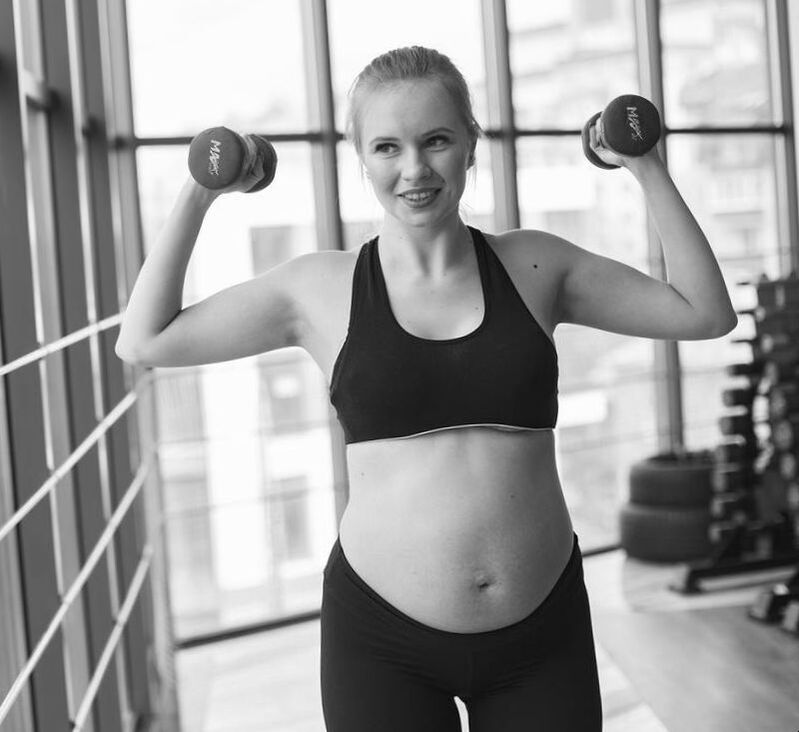

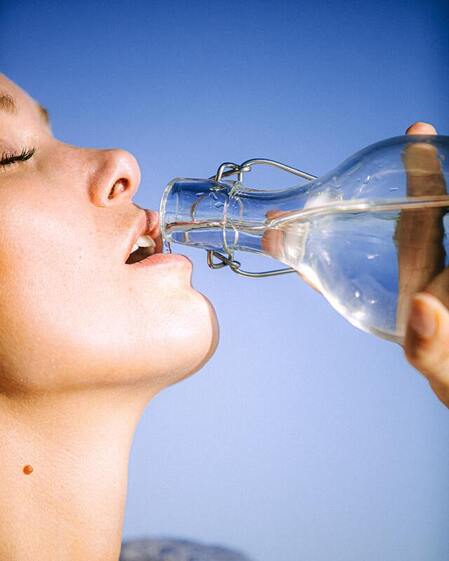

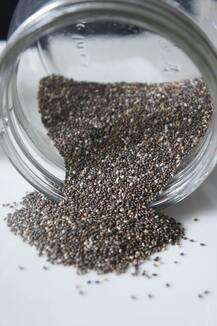

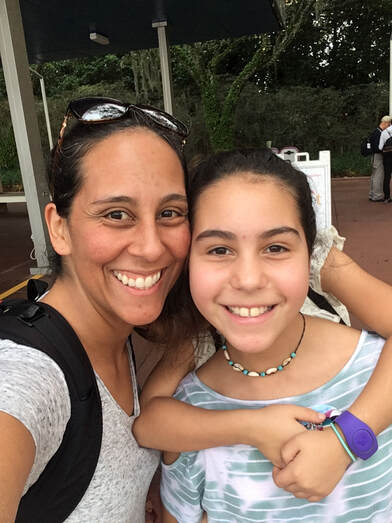



 RSS Feed
RSS Feed
